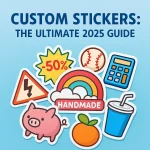- Baby Toys 2026: The Ultimate Expert Guide - 12/04/2025
- Father’s Day 2025 Gifts: The Ultimate Guide - 11/11/2025
- Dating Apps Ultimate 2025 Guide - 10/23/2025
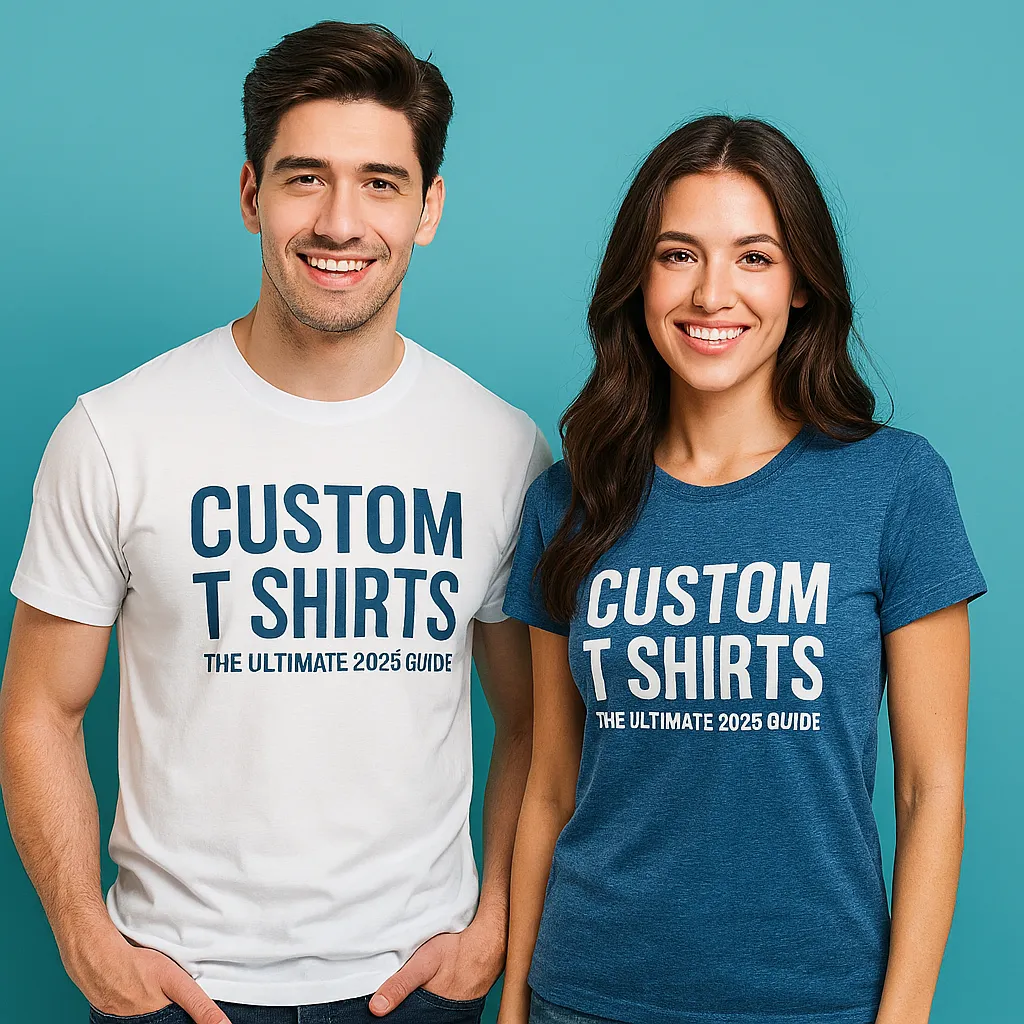
Table of Contents

Custom T Shirts: The Ultimate 2025 Guide 👕✨
Introduction: Why Custom T Shirts Matter 🎨
Custom t shirts have evolved from simple promotional items into powerful tools for branding, personal expression, fundraising, and fashion. Whether you’re running a business, organizing a sports team, launching a clothing brand, or simply creating a unique gift, custom t shirts offer versatility and impact.
The global custom t shirt printing market has seen remarkable growth, fueled by e-commerce, social media trends, and print-on-demand services. With advanced printing technologies and more sustainable fabrics, the industry is projected to keep expanding through 2030.
👉 In this deep-dive guide, we’ll explore:
- Market trends and data 📊
- Printing methods (screen, DTG, sublimation, embroidery, etc.)
- Material and style choices
- Cost comparisons 💵
- Best custom t-shirt platforms and services
- Business opportunities and profit margins
- Eco-friendly and sustainable options 🌱
- FAQs and expert references
Market Overview 🌍
The custom t-shirt industry is booming thanks to personalization trends and online design platforms. According to Grand View Research (2024), the global custom t-shirt printing market size was valued at USD 4.87 billion in 2023 and is expected to grow at a compound annual growth rate (CAGR) of 9.9% from 2024 to 2030.
Key Drivers 🚀
- Rise of print-on-demand (POD) services like Printful, Teespring, and Merch by Amazon.
- Increasing demand for sustainable fabrics (organic cotton, bamboo, recycled polyester).
- Growth in teamwear, corporate branding, and event merchandising.
- Social media influencers using custom apparel to build personal brands.
Data Snapshot (Form Style) 📑
Custom T-Shirt Market Growth Form (2025 Forecast)
| Item | Value | Source |
|---|---|---|
| Global Market Size (2023) | $4.87 Billion | Grand View Research |
| Expected CAGR (2024–2030) | 9.9% | Grand View Research |
| Top Regions | North America, Europe, Asia-Pacific | Statista |
| Top Printing Tech | Screen Printing, DTG, Sublimation | Industry Reports |
| Fastest Growing Segment | Print-on-Demand (POD) | Shopify Data |
Buying Guide: How to Choose the Perfect Custom T-Shirt 🛒
When selecting custom t shirts, consider the following factors:
1. Purpose 👥
- Business branding → logo tees, uniforms
- Events → festivals, weddings, charity runs
- Fashion → streetwear, designer collabs
- Gifting → birthdays, anniversaries
2. Material Options 👕
- 100% Cotton – breathable, soft, eco-friendly
- Polyester blends – durable, moisture-wicking (great for sports)
- Tri-blend (cotton + polyester + rayon) – vintage, lightweight feel
- Sustainable fabrics – organic cotton, hemp, bamboo
3. Printing Method 🎨
| Printing Method | Best For | Pros | Cons |
|---|---|---|---|
| Screen Printing | Bulk orders | Vibrant, long-lasting | Higher setup cost, not good for small runs |
| DTG (Direct-to-Garment) | Small runs, detailed designs | No setup cost, high detail | Works best on cotton |
| Sublimation | Polyester fabrics | All-over prints, vibrant | Limited to polyester |
| Heat Transfer | One-off designs | Affordable, fast | Less durable |
| Embroidery | Premium branding | Professional, textured look | Higher cost |
Part 2: Printing Technologies, Cost Breakdown & Business Opportunities 💡
Printing Technologies Explained 🎨
Different printing techniques define how your custom t-shirt looks, feels, and lasts. Let’s break them down:
1. Screen Printing 🖌️
- Best for: Bulk orders with simple designs.
- How it works: A stencil (screen) is created, and ink is pushed through onto the fabric.
- Pros: Vibrant colors, durable prints, cost-effective for large runs.
- Cons: Expensive for small orders, limited color blending.
2. Direct-to-Garment (DTG) 🖨️
- Best for: One-off designs, small batches, complex artwork.
- How it works: A specialized inkjet printer prints directly onto the shirt.
- Pros: High detail, unlimited colors, no setup fees.
- Cons: Works best on cotton, not ideal for dark polyester fabrics.
3. Sublimation 🌈
- Best for: All-over prints on polyester.
- How it works: Heat transfers dye into fabric fibers.
- Pros: Permanent, lightweight, no cracking.
- Cons: Only works with polyester, not cotton.
4. Heat Transfer (Vinyl) 🔥
- Best for: Custom names/numbers (sports jerseys).
- How it works: Design is cut from vinyl and heat-pressed onto the shirt.
- Pros: Affordable, good for personalization.
- Cons: Less durable, can peel over time.
5. Embroidery ⭐
- Best for: Premium corporate wear, uniforms.
- How it works: Thread stitching creates raised designs.
- Pros: Luxurious, long-lasting, professional.
- Cons: Higher cost, limited in detailed artwork.
Comparison Form: Printing Method Performance 📑
| Printing Method | Durability ⭐ | Cost Efficiency 💵 | Design Flexibility 🎨 | Best For |
|---|---|---|---|---|
| Screen Printing | ★★★★★ | ★★★★★ (bulk) | ★★★☆☆ | Events, large orders |
| DTG | ★★★★☆ | ★★☆☆☆ (small runs) | ★★★★★ | Startups, fashion |
| Sublimation | ★★★★☆ | ★★★★☆ | ★★★★☆ | Sportswear, polyester |
| Heat Transfer | ★★☆☆☆ | ★★★★☆ | ★★★☆☆ | Jerseys, one-offs |
| Embroidery | ★★★★★ | ★★☆☆☆ | ★★☆☆☆ | Corporate branding |
Cost Breakdown 💰
The cost of custom t shirts varies by quantity, material, and printing method. Below is a general cost range (USD):
Example: Average Custom T-Shirt Pricing (2025)
| Quantity | Screen Printing | DTG | Sublimation | Heat Transfer | Embroidery |
|---|---|---|---|---|---|
| 1–10 | $15–$25 each | $18–$30 each | $20–$35 each | $12–$20 each | $25–$40 each |
| 50–100 | $6–$12 each | $15–$22 each | $18–$28 each | $10–$16 each | $20–$30 each |
| 500+ | $3–$7 each | $10–$18 each | $15–$25 each | $8–$14 each | $18–$25 each |
Pro Tip 💡:
- For bulk corporate orders, screen printing is most cost-effective.
- For fashion brands or small runs, DTG is better since there are no setup costs.
Business Opportunities in Custom T Shirts 📈
The custom t-shirt business is one of the most profitable print-on-demand models because:
- Low startup costs (you can launch with POD suppliers).
- High demand from events, influencers, and small businesses.
- Scalable — start small, then expand globally.
Popular Business Models:
- Print-on-Demand (POD)
- Platforms: Printful, Printify, Merch by Amazon.
- Pros: No inventory, low risk.
- Cons: Lower profit margins.
- Bulk Wholesale Printing
- Pros: Higher margins, control over quality.
- Cons: Requires storage, upfront investment.
- Niche Brand Creation
- Focus on a theme (streetwear, fitness, eco-friendly).
- Build strong branding and community.
Profitability Snapshot (Form Style) 📑
| Model | Startup Cost | Profit Margin | Best For |
|---|---|---|---|
| Print-on-Demand | $0–$500 | 15–25% | Beginners, side hustlers |
| Bulk Wholesale | $2,000–$10,000 | 30–50% | Established businesses |
| Niche Fashion Brand | $1,000–$5,000 | 40–60% | Entrepreneurs, creatives |
Part 3: Best Platforms, Branding Strategies & Eco-Friendly Trends 🌱👕
Top Platforms for Custom T Shirts 🌍
If you’re starting a custom t-shirt business or just need personalized designs, choosing the right platform is key.
Leading Platforms (2025):
- Printful 🖨️
- POD & dropshipping service.
- Integrates with Shopify, Etsy, WooCommerce.
- High-quality DTG & embroidery.
- Printify 🌎
- Wide network of print providers.
- Offers competitive pricing.
- Good for scaling large product catalogs.
- Merch by Amazon 📦
- Access to Amazon’s marketplace.
- Royalties-based model.
- Best for creators & influencers.
- TeeSpring (Spring) 🔥
- Popular among YouTubers & creators.
- Social media integration.
- Zero upfront cost.
- Zazzle & Redbubble 🎨
- Marketplace-style POD.
- Great for artists & designers.
- Limited profit margins.
Form: Platform Comparison 📑
| Platform | Startup Cost | Integration | Profit Margin | Best For |
|---|---|---|---|---|
| Printful | $0 | Shopify, Etsy, Amazon | 20–30% | E-commerce stores |
| Printify | $0–$29/mo | Shopify, Etsy, Wix | 20–35% | High-volume sellers |
| Merch by Amazon | $0 | Amazon Marketplace | 10–20% royalties | Influencers |
| TeeSpring | $0 | Social Media | 15–25% | Content creators |
| Redbubble/Zazzle | $0 | Marketplace only | 10–20% | Artists, designers |
Branding Strategies for Custom T Shirts 🎯
Your t-shirt design is only half the story — branding is what sets you apart.
1. Niche Down 🎨
Pick a target market:
- Fitness enthusiasts 🏋️♂️
- Eco-conscious shoppers 🌱
- Pet lovers 🐶🐱
- Streetwear fans 🏙️
2. Leverage Social Media 📲
- Instagram & TikTok for visuals.
- YouTube for tutorials & style guides.
- Pinterest for design inspiration.
3. Storytelling in Design 📖
- Customers connect with emotional narratives.
- Example: A sustainability brand telling the story of eco-friendly cotton farms.
4. Packaging & Presentation 🎁
- Eco-friendly packaging.
- Custom tags, stickers, thank-you cards.
Eco-Friendly Custom T Shirts 🌍
Sustainability is not just a trend — it’s becoming the industry standard.
Consumers, especially Gen Z & Millennials, prefer brands that care about the planet.
Sustainable Materials 🌱
- Organic Cotton: Grown without pesticides.
- Bamboo: Soft, antibacterial.
- Recycled Polyester: Reduces plastic waste.
- Hemp: Durable, less water-intensive.
Printing Innovations ♻️
- Water-based inks instead of plastisol.
- Low-waste DTG printing.
- On-demand production (no excess stock).
Eco-Friendly T-Shirt Trend Form 📑
| Factor | Trend in 2025 | Consumer Preference % |
|---|---|---|
| Organic Cotton | Rising adoption | 62% (Statista 2024) |
| Bamboo Fabrics | Growing niche | 45% |
| Recycled Polyester | Strong growth | 58% |
| Water-Based Inks | Industry shift | 70% |
| On-Demand Printing | Dominant | 75% |
Case Study: Patagonia’s Sustainable Apparel 🌿
Patagonia has set the standard by:
- Using 100% organic cotton in many lines.
- Promoting repair & reuse programs.
- Maintaining transparent supply chains.
This model proves that eco-conscious apparel can be profitable and brand-enhancing.
Part 4: Marketing, SEO & Future Trends 🚀👕
Marketing Strategies for Custom T Shirts 📣
Once you have great designs, you need to get them in front of buyers. Here are proven methods:
1. Social Media Marketing 📲
- Instagram Reels & TikTok videos → Show styling tips, behind-the-scenes design processes.
- Facebook Ads → Target by interests (fitness, streetwear, events).
- Pinterest → T-shirt mockups perform well for visual discovery.
2. Influencer Collaborations 🤝
- Partner with micro-influencers (10k–50k followers).
- Offer them affiliate codes to drive sales.
- Works especially well in niche apparel markets.
3. Content Marketing ✍️
- Create blog posts like “Top 10 Custom T-Shirt Ideas for 2025”.
- Use YouTube tutorials on styling or printing.
- Share case studies of customer success.
4. Email Marketing 📧
- Send style guides, discount offers, seasonal drops.
- Average ROI is $36 for every $1 spent (Litmus 2024).
5. Offline Marketing 🏬
- Partner with gyms, coffee shops, or local events.
- Provide free branded tees as giveaways.
SEO for Custom T-Shirt Businesses 🔎
Ranking high on Google & Bing ensures long-term organic sales.
Keyword Strategy 📝
- Use long-tail keywords:
- “best custom t shirts for events 2025”
- “eco-friendly screen printing shirts”
- “bulk corporate custom t shirts USA”
On-Page SEO ✅
- Optimize titles, meta descriptions, H1-H3 headings.
- Add alt text for images (mockups, real product shots).
- Use FAQ schema to boost visibility.
Technical SEO ⚙️
- Fast website loading speed (under 3 sec).
- Mobile-optimized design.
- Secure checkout (HTTPS).
SEO Checklist Form 📑
| SEO Factor | Action | Benefit |
|---|---|---|
| Keywords | Use “custom t shirts” + variations | Higher ranking |
| Meta Titles | Under 60 chars, keyword-rich | Click-through boost |
| FAQs | Add schema markup | Featured snippet chance |
| Image Alt Tags | Describe designs | Google Images traffic |
| Page Speed | Optimize images, use CDN | Better UX & SEO |
Future Trends in Custom T Shirts (2025–2030) 🔮
The custom t-shirt industry is constantly evolving. Here’s what experts predict:
1. AI-Generated Designs 🤖
- Tools like MidJourney & DALL·E are powering unique, fast designs.
- Expect more brands to integrate AI into the creative workflow.
2. Hyper-Personalization 🎁
- Shoppers will demand personalized shirts with names, QR codes, AR features.
- Example: T shirts that link to a digital playlist or NFT.
3. Sustainable Supply Chains 🌱
- Carbon-neutral production will become standard.
- Brands using recycled water & closed-loop dyeing systems will gain loyalty.
4. 3D & Augmented Reality (AR) Fitting 👓
- Virtual try-on experiences for online shoppers.
- Reduces return rates & improves customer satisfaction.
5. Localized Print Hubs 🏭
- On-demand fulfillment centers close to buyers → faster shipping, lower emissions.
Future Trend Form 📑
| Trend | Adoption Rate (Forecast 2030) | Impact |
|---|---|---|
| AI-Generated Designs | 65% | Faster, cheaper creativity |
| Hyper-Personalization | 70% | Higher customer loyalty |
| Sustainable Supply Chains | 80% | Eco-friendly branding |
| AR Fitting Tech | 55% | Reduced returns |
| Localized Print Hubs | 60% | Faster shipping |
Expert Insight 🎤
📢 According to McKinsey’s Fashion Report (2025), 70% of consumers say they are more likely to buy from a clothing brand that offers personalization + sustainability together.
This makes custom t shirts one of the most future-proof products in the fashion world.
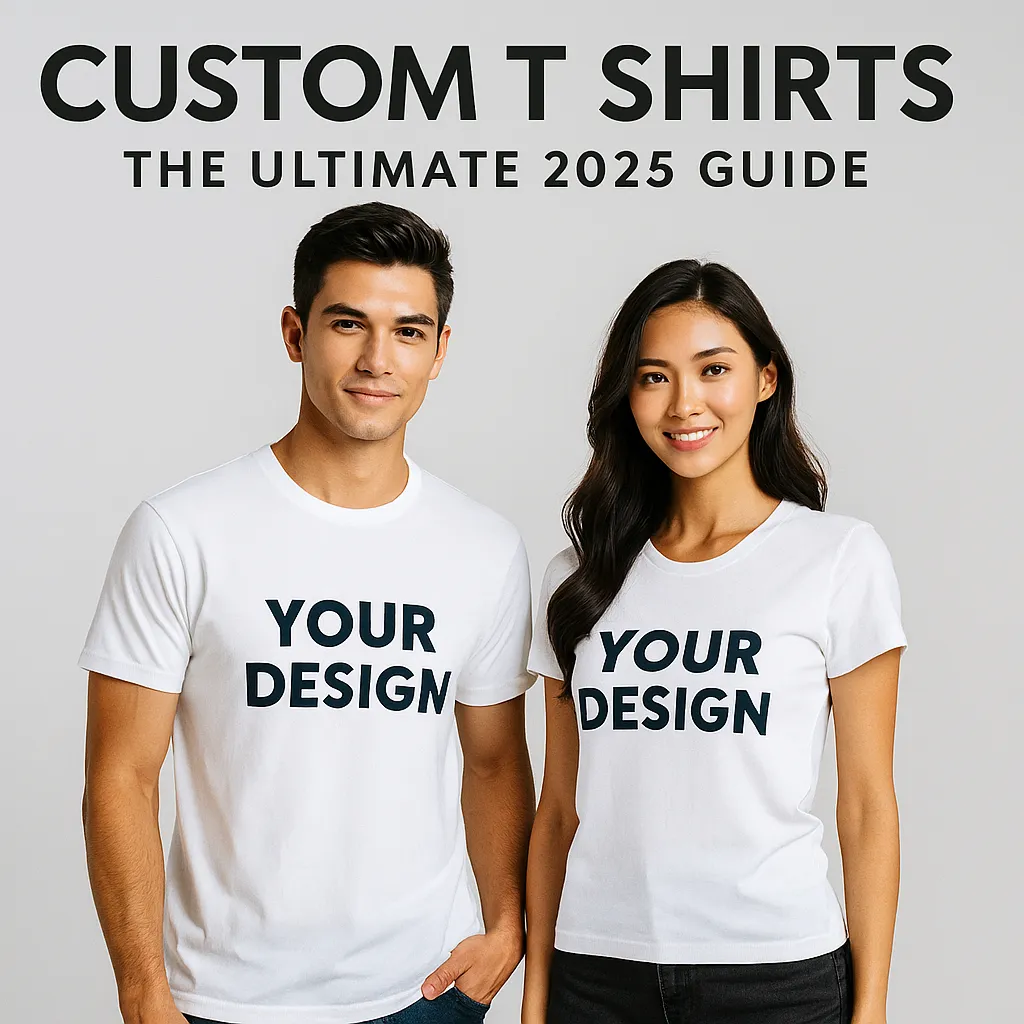
Part 5: FAQs, References & Final Thoughts 📚👕
Frequently Asked Questions (FAQs) ❓
1. How much does a custom t-shirt cost in 2025?
💵 On average:
- Single orders: $15–$30
- Bulk orders (100+): $5–$10 per shirt
- Costs vary by fabric, printing method, and order size.
2. What’s the best printing method for small businesses?
✅ DTG (Direct-to-Garment) is best for small runs due to no setup fees and unlimited colors.
For bulk → screen printing remains most cost-effective.
3. Are eco-friendly custom t shirts more expensive?
🌱 Slightly, yes. Organic cotton or bamboo shirts cost about 10–20% more than standard cotton.
But demand for sustainability allows brands to charge higher retail prices, balancing costs.
4. Can I start a custom t-shirt business with no upfront investment?
Yes! Using Print-on-Demand platforms like Printful, Printify, or Merch by Amazon → you can launch with zero inventory costs.
5. Which fabric is best for sports t shirts?
🏋️♂️ Polyester blends (often 100% polyester or polyester-cotton mix).
They’re moisture-wicking, durable, and lightweight.
6. How do I increase profit margins in custom t-shirt sales?
- Focus on niche designs (pet lovers, gamers, eco-conscious shoppers).
- Upsell with bundles (buy 2, get 1 free).
- Offer limited-edition drops to create urgency.
7. What’s the global custom t-shirt market outlook?
🌍 Market size in 2023: $4.87 billion.
Expected to grow at CAGR 9.9% (2024–2030) → could exceed $9.5 billion by 2030.
Authoritative Sources & References 📑
Here are credible sources that validate the data in this guide:
- Grand View Research (2024): Custom T-shirt Printing Market Size & Forecast
👉 https://www.grandviewresearch.com - Statista (2024): Global Apparel & Custom Clothing Industry Insights
👉 https://www.statista.com - Shopify (2024): Print-on-Demand Business Guide
👉 https://www.shopify.com - McKinsey & Company (2025): State of Fashion Report
👉 https://www.mckinsey.com - Litmus (2024): Email Marketing ROI Study
👉 https://www.litmus.com - Patagonia Sustainability Report (2024): Sustainable Apparel Practices
👉 https://www.patagonia.com
Final Thoughts ✨
Custom t shirts are more than just fabric and ink — they’re a canvas for identity, branding, and innovation.
- For individuals, they’re a form of personal expression 🎨.
- For businesses, they’re cost-effective marketing tools 📣.
- For entrepreneurs, they’re a gateway into the booming print-on-demand economy 💼.
- For the planet, the shift to eco-friendly production 🌱 ensures a sustainable future.
With AI-generated designs, eco-conscious fabrics, and global e-commerce integration, the custom t-shirt industry in 2025 is not only thriving but also shaping the future of fashion and branding.
👉 Whether you’re creating a shirt for a special event, launching your clothing brand, or running a side hustle, now is the perfect time to dive into the world of custom t shirts.
✅ Personalized Amazon Product Recommendations
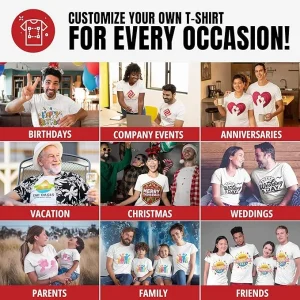
Adult T-Shirt Tee
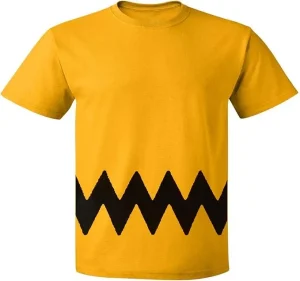
Custom Kingdom Peanuts Charlie Brown T-Shirt
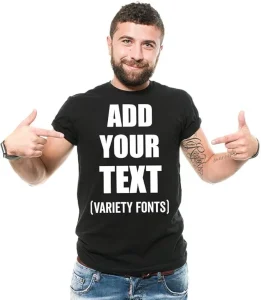
Custom T-Shirt, Personalized T Shirt, Cotton Tee
Recommended Articles:
- Father’s Day 2025 Gifts: The Ultimate Guide
- Ultimate Dating Advice Guide 2025
- Custom Home: The Ultimate 2025 Guide
- Custom Window Treatments: Ultimate 2025 Guide
- Custom T Shirts: The Ultimate 2025 Guide
- Custom Hats: The Ultimate 2025 Guide
- Custom Stickers: The Ultimate 2025 Guide
- Custom Ink: The Ultimate 2025 Guide
- 100 Best Gifts for New Moms 2025 Ultimate Guide
- 100 Best Personalized Gifts 2025 Ultimate Guide
- 100 Best Anniversary Gifts 2025 Ultimate Guide
- 100 Best Unique Gifts 2025 Ultimate Guide
- 100 Best Christmas Gifts 2025 Ultimate Guide
- 100 Best Birthday Gifts Ultimate 2025 Guide
- 100 Best Mothers Day Gifts 2025 Ultimate Guide
- 100 Best Gifts for Men Ultimate 2025 Guide
- 100 Best Gifts for Women 2025 Ultimate Guide
- 100 Best Gifts for Mom Ultimate 2025 Guide
- 100 Best Gifts for Dad Ultimate 2025 Guide
✅ Amazon's Best Gift Ideas
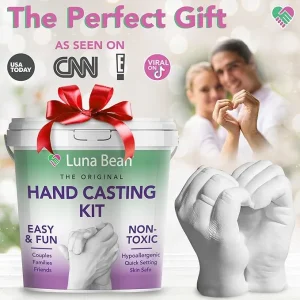
Luna Bean Hand Casting Kit – The Original Hand Mold Kit for Couples – Christmas Gifts, Bridal Shower, Wedding, Engagement Gifts for Her Him Anniversary for Men Women Wife Husband Boyfriend Girlfriend

Gifts For Women Gift Basket for Women– 9 Piece Set of Vanilla Coconut Home Spa Set, Includes Fragrant Lotions, Extra Large Bath Bombs, Coconut Oil, Luxurious Bath Towel & More
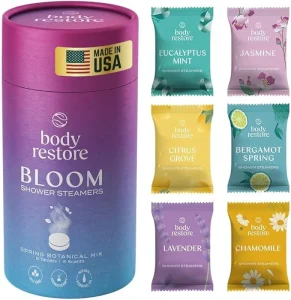
Body Restore Shower Steamers Aromatherapy 6 Pack - Christmas Stocking Stuffers, Birthday Gifts for Women, White Elephant, Relaxation, Self Care for Men - Bloom
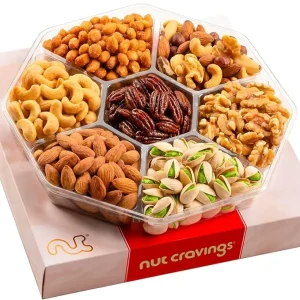
NUT CRAVINGS - Diwali Sweets Hamper Mid-Autumn Festival Mixed Nuts Gift Basket in Red Gold Box (7 Assortments, 1 LB) Food Arrangement, Healthy Snack Care Package, Food Assortments

From Crook to Cook: Platinum Recipes from Tha Boss Dogg's Kitchen (Snoop Dogg Cookbook, Celebrity Cookbook with Soul Food Recipes)
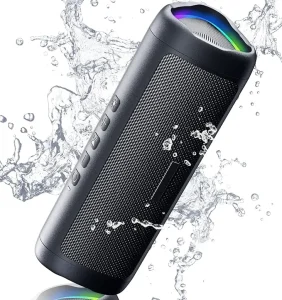
Bluetooth Speaker with HD Sound, Portable Wireless, IPX5 Waterproof, Up to 20H Playtime, TWS Pairing, BT5.3, for Home/Party/Outdoor/Beach, Stocking Stuffers, White Elephant Gifts for Adults (Black)
2026 Annual Event😊:
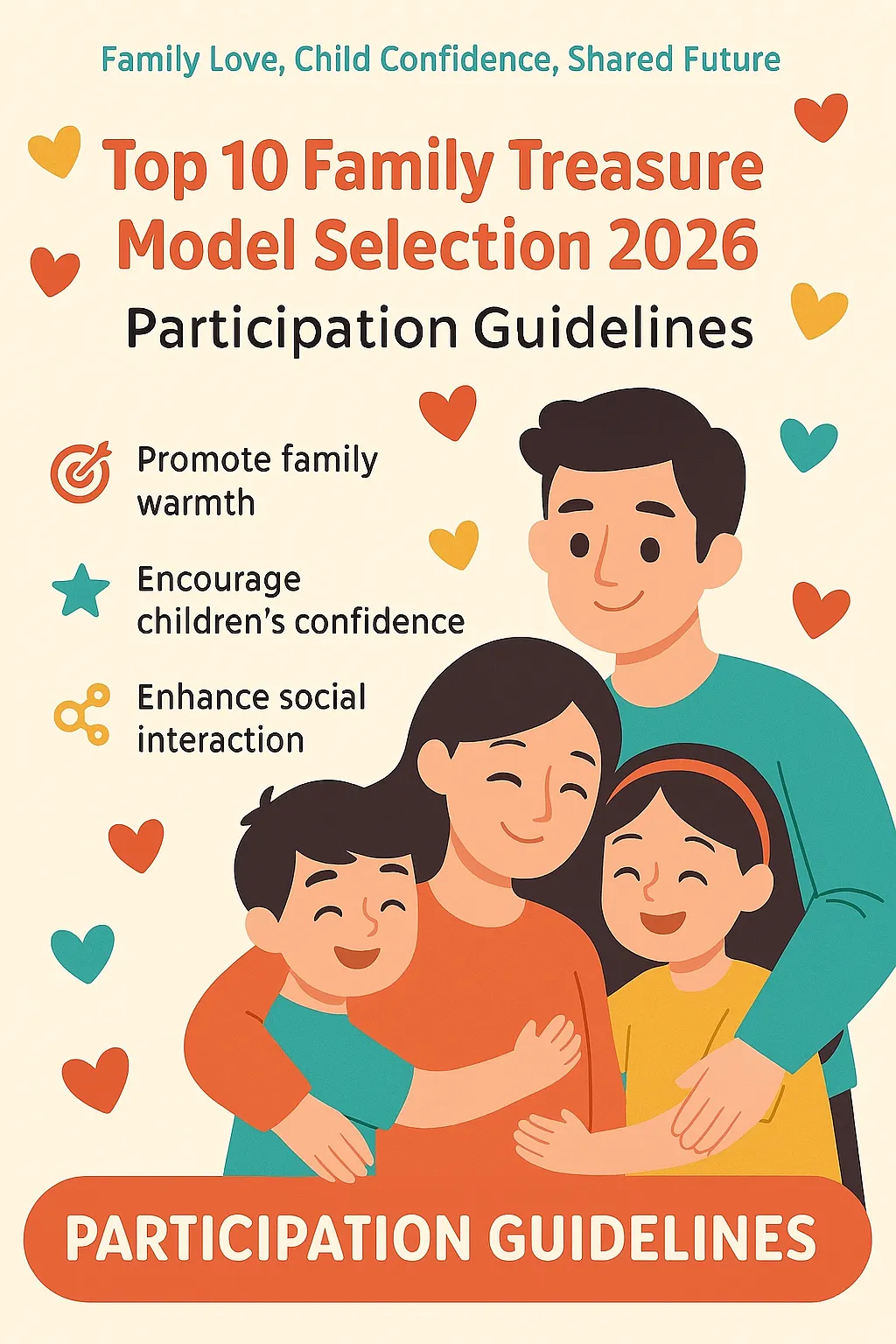
💕2026 Top Ten "Family Treasure" Model Selection💕
Participation Guidelines
🎯 Purpose of the Event
- Promote family warmth: Showcase the love and companionship between parents and children
- Encourage children’s confidence: Cultivate stage presence and creativity
- Enhance social interaction: Build a platform for family and community engagement
👶 Eligibility
- Age requirement: Children aged 3–12
📅 Event Schedule
- Registration period: December 1, 2025 – December 1, 2026
📝 Registration Method
- Online registration: Send application materials to Email: [email protected]
- Required materials:
- A child’s daily photo or a talent performance video (1–2 minutes)
- One family group photo
- A brief family story or participation statement
🏅 Awards
- Honorary Title: Top Ten "Family Treasure" Models
- Recognition: The names and corresponding photos of the winners
- Will be permanently displayed on the website loveahh.com
📌 Notes
- Authenticity of materials: All submitted information must be genuine and valid








